Creating a shade garden in USDA Zone 9 can be an exciting venture, especially for those who enjoy the beauty and tranquility that lush greenery brings. With its warm climate and mild winters, Zone 9 offers a unique growing environment that many plants thrive in.
In this guide, we will explore a variety of shade-loving plants ideal for this region, ensuring your garden flourishes even in low-light conditions.
Laurel (Kalmia spp.)
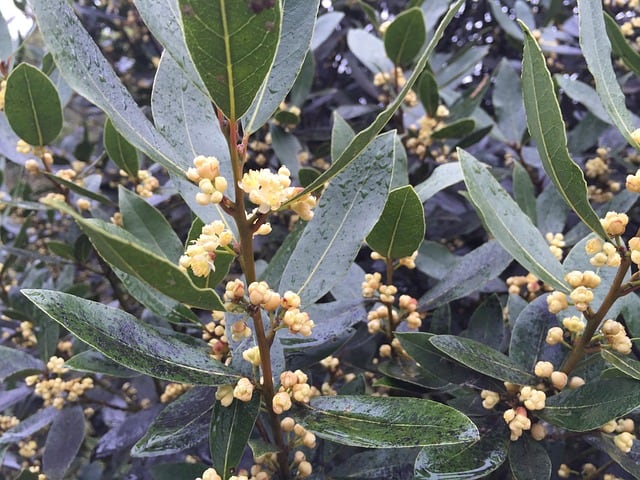
Laurel, specifically Kalmia spp., is a striking addition to any shade garden. Known for its glossy evergreen leaves and beautiful clustered blooms, laurel brings both aesthetic charm and functionality. These hardy plants can tolerate partial shade and adapt well to a variety of soil types, thriving in well-draining earth that retains some moisture.
Laurel plants, particularly mountain laurel (Kalmia latifolia), produce exquisite flowers in late spring, showcasing colors ranging from soft pinks to vivid whites. These clusters of blossoms not only captivate gardeners but also attract pollinators such as bees and butterflies, enhancing the ecological balance of your garden.
In terms of care, laurel is relatively low-maintenance. Once established, it requires little watering, making it a sensible choice for beginner gardeners who might occasionally forget to tend every plant. Remember to prune laurel lightly to promote healthy growth and maintain shape, particularly after blooming.
Bugleweed (Ajuga reptans)
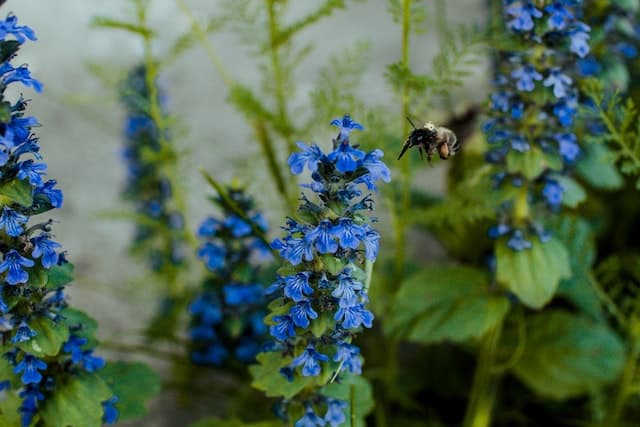
If you’re looking for ground cover that thrives in shade, consider Bugleweed (Ajuga reptans). This perennial offers both vibrant foliage and striking spikes of blue flowers in spring, adding a splash of color to otherwise dim areas of your garden. It’s an excellent choice for suppressing weeds and preventing soil erosion, making it practical as well as beautiful.
Bugleweed is quite adaptable and can tolerate varying conditions, but it truly shines in moist, well-drained soil. This plant spreads easily, so if you want a full coverage quickly, Bugleweed is perfect. However, keep its spreading nature in check by occasionally trimming back overzealous growth to maintain your desired aesthetics.
Moreover, Ajuga’s foliage can vary, showcasing shades of green, bronze, and even purplish hues. This diversity can be utilized to create visual interest in your shade garden while supporting local wildlife, as Bugleweed attracts beneficial insects to your space.
Heavenly Bamboo (Nandina domestica)
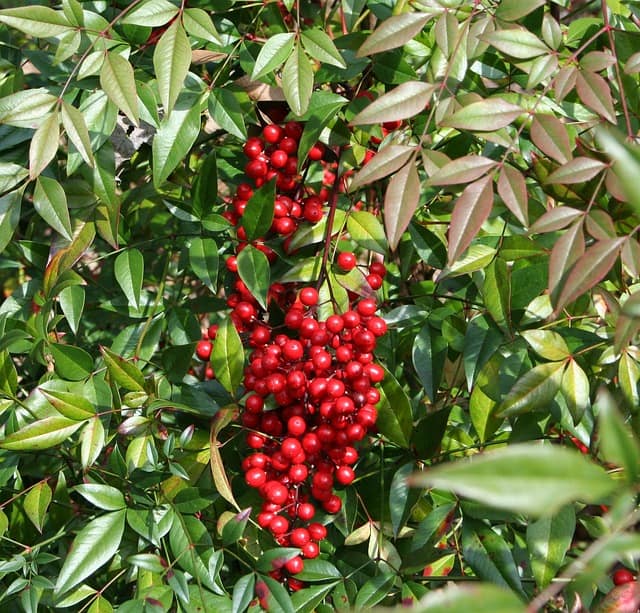
Heavenly bamboo (Nandina domestica) isn’t actually bamboo at all! This evergreen shrub boasts finely textured foliage that changes color throughout the seasons—from bright green in summer to brilliant reds and purples in fall. Nandina domestica can grow in partial to full shade, making it versatile for various garden layouts.
One of the standout features of heavenly bamboo is its ornamental berries, which provide winter interest and attract a range of birds to your garden. These berries, however, can be toxic to pets, so it’s essential to consider your household when adding Nandina to your shade garden.
In terms of care, heavenly bamboo is remarkably resilient. It adapts well to various soil types and tolerates drought once established. Minimal pruning is generally necessary; just remove any dead or damaged branches to keep the shrub healthy and thriving.
Scarlet Firethorn (Pyracantha coccinea)
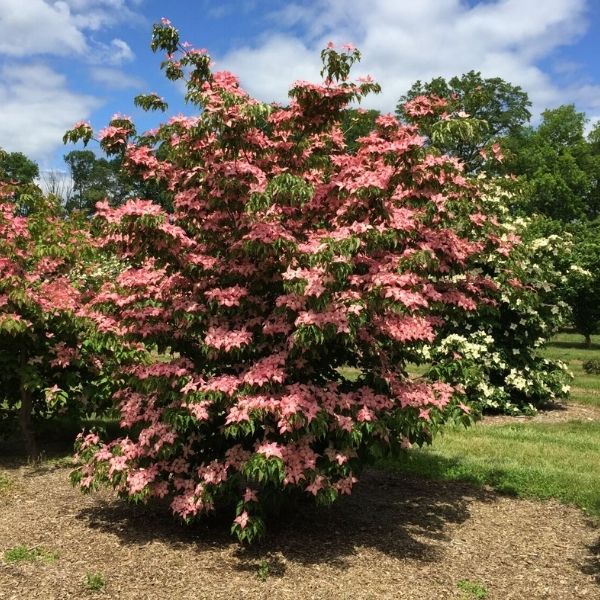
Scarlet Firethorn (Pyracantha coccinea) is another excellent option for those looking to enhance their shade gardens. Known for its dense, thorny branches, this plant can serve as an effective privacy screen or hedge. With fragrant flowers in spring followed by vibrant red-orange berries in the cooler months, it’s a year-round spectacle.
This hardy shrub thrives in part shade to full sun, though it performs best in well-drained soil. While it can withstand some drought, regular watering is beneficial, particularly during prolonged dry spells. Scarlet firethorn is also a magnet for birds and other wildlife, drawn to its berries, thus supporting biodiversity in your garden.
However, caution should be exercised due to its thorns, which can deter some animals and may pose a risk for children. When positioning this plant, consider its potential as a barrier and ensure it’s planted in a suitable location.
Rhododendron and Azalea (Rhododendron spp.)
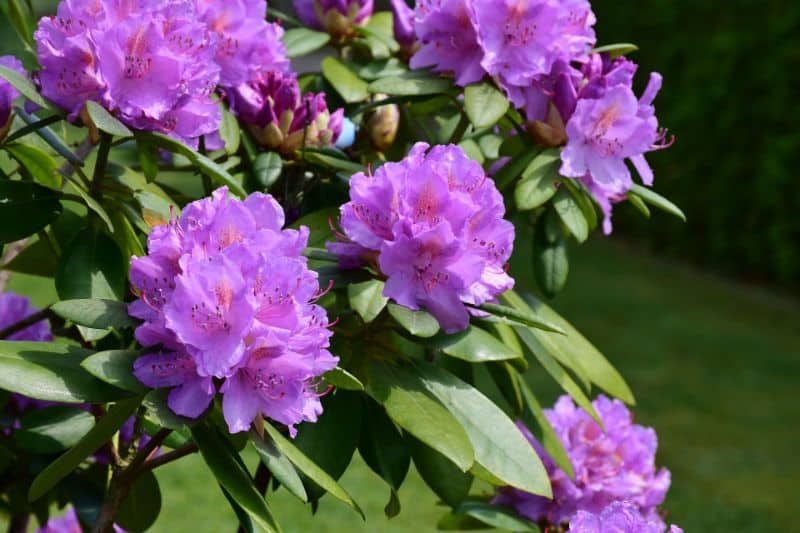
Few plants rival the beauty of rhododendrons and azaleas (Rhododendron spp.) when it comes to shade gardens. These stunning shrubs bloom profusely in the spring, offering a rainbow of colors that can brighten up even the darkest corners of your garden. They thrive in filtered sunlight or partial shade and prefer acidic, well-draining soil rich in organic matter.
Rhododendrons can grow quite large, forming robust shrubs, while azaleas tend to stay smaller and more compact. Both variants can enhance the charm of your shade garden, particularly when planted in groups. Ensure they receive adequate moisture, especially during dry spells, as these plants prefer consistent watering without getting waterlogged.
Fertilizing your rhododendrons and azaleas in early spring will promote healthy foliage and an abundance of blooms. Pruning is essential after flowering to maintain their shape and encourage bushier growth. With their stunning visuals and moderate care requirements, these flowering shrubs make a delightful addition to any garden.
Periwinkle (Vinca minor)
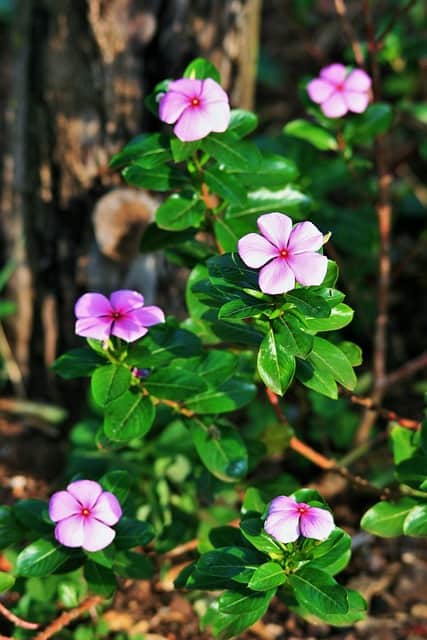
Periwinkle, or Vinca minor, is an excellent ground cover for shady areas. Known for its evergreen foliage and charming blue or purple flowers, it thrives in partial to full shade, bringing a touch of color to your garden year-round. This plant is stunning for filling in spaces beneath trees and alongside pathways, creating a lush carpet of greenery.
Periwinkle is notoriously hardy and can tolerate poor soil conditions, though it does prefer a well-drained environment. Once established, it requires little maintenance, making it ideal for beginner gardeners. It spreads readily, which can be beneficial for covering larger areas but should be monitored to prevent it from overtaking neighboring plants.
This resilient perennial also offers an inviting habitat for gardeners looking to attract pollinators. The flowers are particularly appealing to bees and butterflies, contributing to the vibrancy and health of your outdoor space.
Candytuft (Iberis sempervirens)
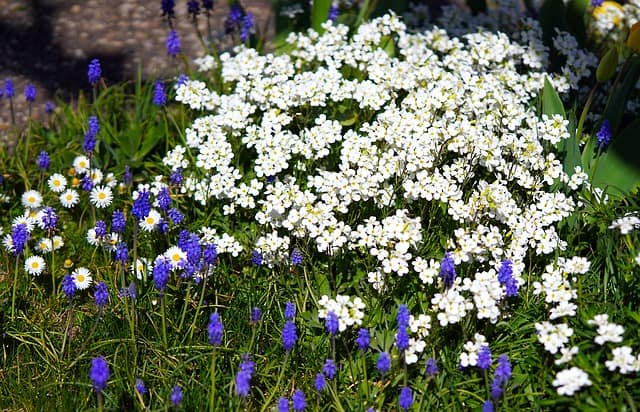
For those seeking a low-maintenance flowering option, look no further than Candytuft (Iberis sempervirens). This perennial is renowned for its lovely white flowers that bloom in spring, brightening up shaded areas with delightful clusters. It works particularly well as a ground cover or edging plant, creating a tidy and elegant border around your shade garden.
Candytuft prefers well-drained soil and will thrive in partial shade. It’s relatively drought-tolerant once established, making it suitable for gardeners who might have a busy schedule. Regular deadheading after flowering can promote additional blooms and keep the plant looking tidy throughout the growing season.
This hardy perennial is not only beautiful but also attracts pollinators, thanks to its abundant flowers. With minimal care requirements and a vibrant springtime display, Candytuft is a wonderful addition to any Zone 9 shade garden.
Japanese Sedge (Carex spp.)
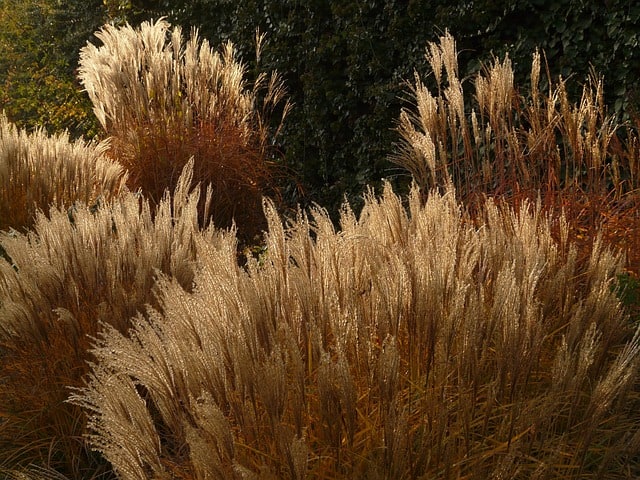
Japanese sedge (Carex spp.) brings a unique texture and elegance to any shade garden. This grass-like perennial flourishes in part to full shade and features arching foliage that adds movement and visual intrigue to your landscape. With a variety of species and cultivars available, you can find the perfect sedge to complement your existing garden design.
Japanese sedge prefers well-drained, moist soil and is an excellent choice for woodland gardens or along streams and ponds. It serves as a fantastic understory plant, providing ground cover while maintaining a lush appearance. The ornamental value of sedge is particularly pronounced when planted in groups, where its graceful foliage sways in the breeze.
Low maintenance and highly adaptable, Japanese sedge adjusts well to various growing conditions and can tolerate occasional drought once established. This versatility makes it a fantastic option for beginner gardeners wanting to create a serene and lush shade garden.
Leucothoe (Leucothoe spp.)
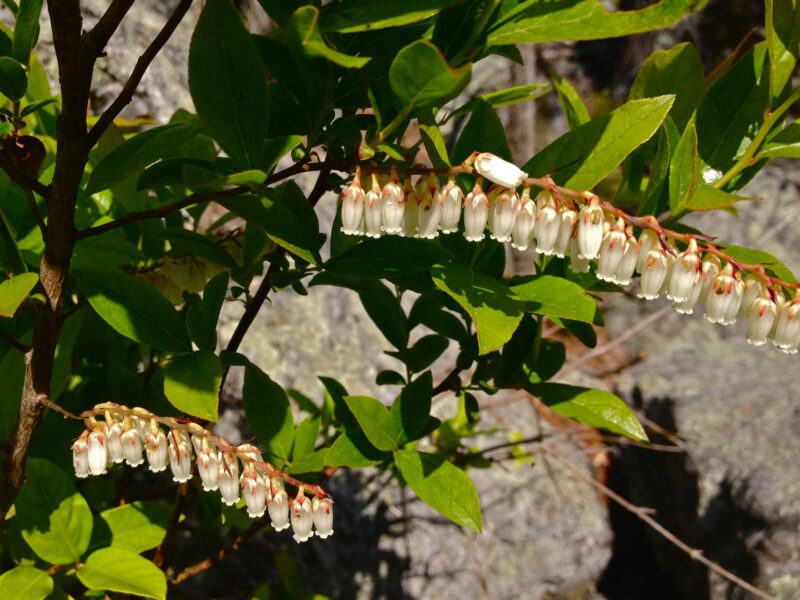
Leucothoe, with its graceful arching branches and evergreen leaves, is a superb choice for a shade garden. This shrub tolerates a wide range of light conditions, from partial shade to deep shade, making it apt for under tree canopies or in darker garden corners. With its dainty racemes of white flowers in spring, Leucothoe adds an element of delicacy to your plant arrangement.
Leucothoe prefers acidic, well-draining soil and retains moisture. It is relatively low-maintenance; regular pruning can help maintain its shape and encourage better airflow. Since it’s a slow-growing plant, patience is essential, but the enduring beauty it contributes to your shade garden is well worth the wait.
In addition to its aesthetic appeal, Leucothoe is beneficial for wildlife. Its flowers attract various pollinators, ensuring your garden supports local ecosystems. With its unique form and reliable performance, this shrub is a charming component for beginners seeking easy-care shade plants.
English Ivy (Hedera helix)
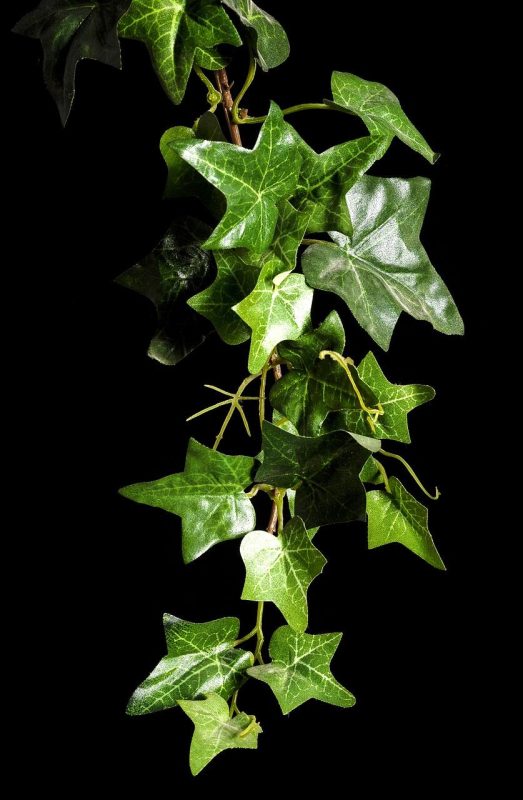
English Ivy (Hedera helix) is one of the classic shade garden plants that has stood the test of time. Its trailing vines and glossy, lobed leaves create a lush cover that can easily cascade over walls and rock gardens. English Ivy thrives in shade, making it an ideal plant for darker areas of your landscape.
Growing this hardy vine is relatively easy, as it adapts to both rich and poor soils and can tolerate a wide range of moisture levels. However, while it’s low-maintenance, it’s crucial to monitor its growth. This vigorous plant can spread rapidly, sometimes becoming invasive, so regular pruning is advisable to keep it in check.
English Ivy also offers year-round greenery, even in winter, providing visual interest throughout the seasons. Moreover, it acts as a natural air purifier, improving the environmental quality around your home. With its versatility and classic appeal, English Ivy is a worthy addition to any Zone 9 shade garden.
Lilyturf (Liriope muscari)
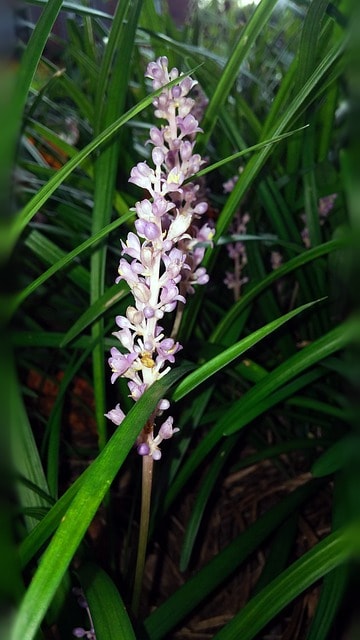
Lilyturf, or Liriope muscari, is a resilient perennial that thrives in shade. Known for its grassy foliage and striking purple flower spikes that bloom in summer, it cultivates a unique aesthetic in the garden. Lilyturf works well as a border or ground cover, creating a lush, evergreen carpet beneath trees or along pathways.
This plant is adaptable, flourishing in average soil conditions and tolerating various light levels, including full shade. Once established, it is drought-resistant, making it a practical choice for beginners who appreciate low-maintenance options. While it appreciates some moisture, Liriope prefers well-draining soils to thrive.
Occasional trimming of the foliage in late winter or early spring helps maintain its shape and encourages fresh growth for the new season. Beyond its ornamental qualities, lilyturf serves as a habitat for beneficial insects and provides year-round interest with its evergreen foliage. It’s an excellent choice for anyone creating a serene shade garden.
Mondo Grass (Ophiopogon japonicus)
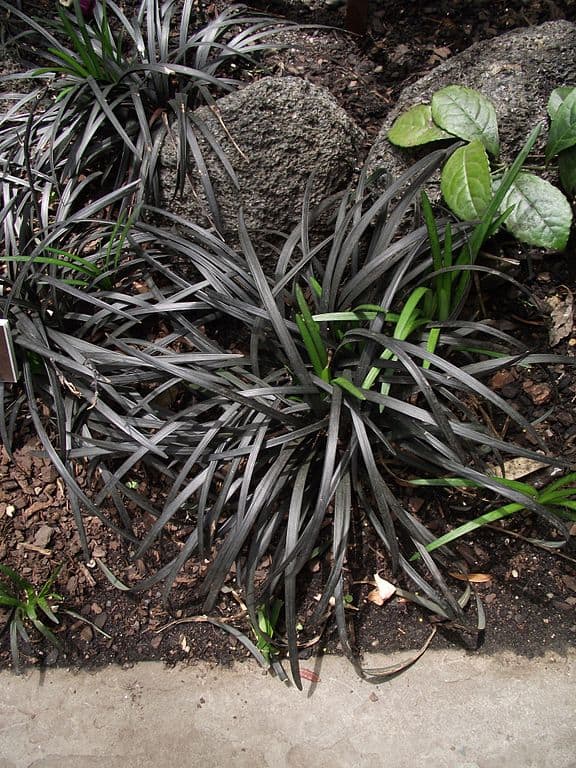
Mondo grass (Ophiopogon japonicus) is another exceptional ground cover for shady areas, known for its fine-textured foliage resembling grass. This evergreen perennial grows slowly but surely, eventually forming a dense mat that suppresses weeds. Mondo grass prefers partial to full shade and is tolerant of poor soil conditions.
In addition to its resilient nature, mondo grass produces small, bell-shaped purple flowers in late summer and fall, followed by decorative berries. This plant typically requires minimal watering once established, making it suitable and easy to care for, especially for novice gardeners.
For best results, regular mulching around mondo grass plants aids in moisture retention and weed suppression. With its lush, green appearance, Mondo grass provides a serene ground cover that enhances the beauty of shade gardens without overwhelming other plants in your landscape.
Aucuba (Aucuba japonica)
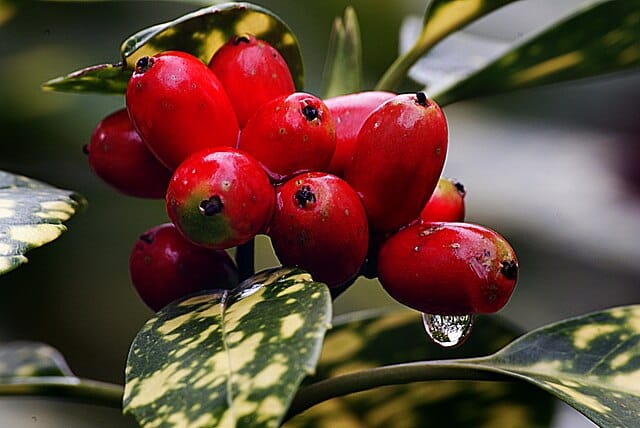
Last but certainly not least, Aucuba (Aucuba japonica), also known as the Japanese laurel, is treasured for its striking foliage. This evergreen shrub is a robust shade lover, making it perfect for those darker areas of your garden. Aucuba features glossy, dark green leaves, some of which are wonderfully speckled with gold, creating a stunning contrast in your plantings.
Aucuba grows well in moist, well-drained soil, tolerating partial to full shade with ease. While it prefers regular watering, this adaptable shrub is also somewhat drought-resistant once established. Pruning is typically minimal, allowing you to maintain its natural form without too much effort.
One unique aspect of Aucuba is its fruit; the female plants produce bright red berries, which can provide seasonal interest and attract birds. Just be mindful of its growth rate, which can be vigorous. Aucuba’s stunning appearance and adaptability make it a fine choice for beginner gardeners seeking reliable and beautiful shade plants.
Barrenwort (Epimedium spp.), Also Known as Bishop’s Hat
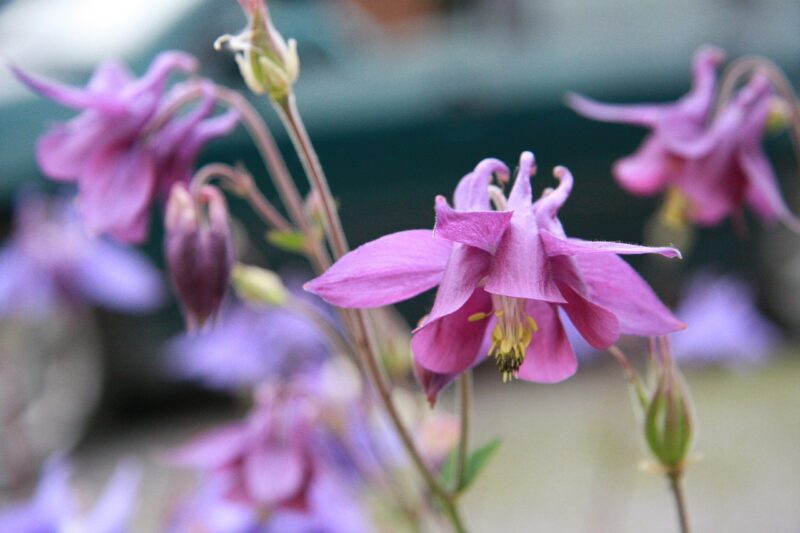
Barrenwort, commonly referred to as Bishop’s Hat, is a fantastic perennial for shaded gardens. This low-growing plant features heart-shaped leaves that create a soothing carpet of greenery, making it an ideal ground cover. The delicate flowers, which appear in spring, come in various colors, including yellow, white, purple, and pink, providing a gentle contrast to the foliage.
Barrenwort thrives in well-drained soil and does well in partial to full shade, making it perfect for those tricky spots under trees or along shaded walkways. Its ability to tolerate dry conditions once established is particularly appealing to gardeners with busy schedules or those who prefer low-maintenance plants. Additionally, Barrenwort is deer-resistant, adding another layer of ease for those with local wildlife.
Bleeding Heart (Dicentra spectabilis)
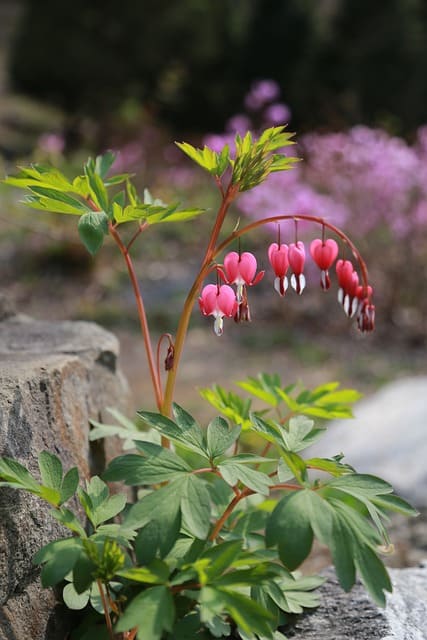
The Bleeding Heart is a must-have for any shade garden enthusiast. With its unique, heart-shaped, pink flowers that dangle delicately from arching stems, this perennial truly captivates the hearts of all who see it. Blooming in spring, Bleeding Heart adds a touch of romance to your landscape.
This plant loves cool, moist soil and thrives in partial to full shade, making it an excellent choice for woodland gardens or areas that receive filtered sunlight. Regular watering is beneficial, especially during dry periods, as Bleeding Heart can be sensitive to drought.
As an added bonus, the foliage of Bleeding Heart is equally charming, offering a fern-like texture that complements the flowers beautifully. After blooming, the plant’s leaves will remain lush throughout the growing season. When the blooms fade, cut back the stems to encourage fresh growth and maintain a tidy appearance.
Bolivian Fuchsia (Fuchsia spp.)
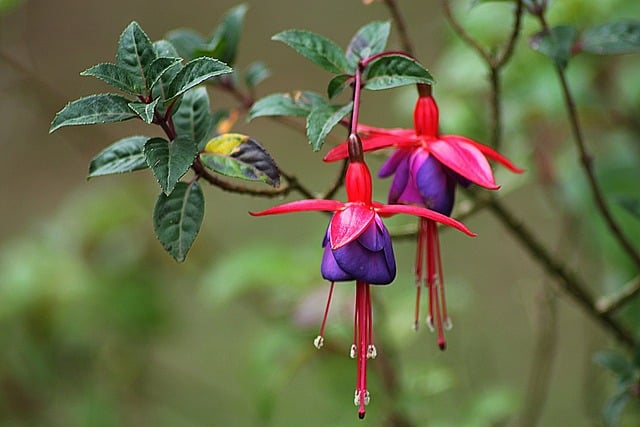
If you’re looking for vibrant color in your shade garden, Bolivian Fuchsia is a stunning option. Known for its drooping, tubular flowers that come in shades of pink, purple, and red, this plant can create a dramatic focal point. The lush green foliage adds to its overall beauty, making it an eye-catching choice for shaded areas.
Bolivian Fuchsia prefers a sheltered location with dappled sunlight or light shade. It requires well-drained, fertile soil to thrive. Regular watering is crucial, particularly during hot spells, as this plant enjoys a bit of moisture but should never be waterlogged. Adding mulch around the base can help retain moisture and keep the roots cool.
This fuchsia is also known for attracting hummingbirds and butterflies, making it a lively addition to your garden. With proper care, Bolivian Fuchsia can bloom profusely from summer into fall, adding a burst of color when other plants may begin to wane.
Bugleweed (Ajuga reptans)

Bugleweed, or Ajuga reptans, is an ideal ground cover for shady areas and has much to offer. This hardy perennial features attractive foliage that ranges from deep green to rich purples, depending on the variety. In spring, it produces lovely spikes of blue flowers that attract bees and butterflies, adding life to your shaded garden.
Bugleweed thrives in both partial and full shade and is content in a variety of soil conditions. Once established, it is drought-tolerant, which makes it perfect for those who may not have the time for extensive watering.
As it spreads, Bugleweed effectively suppresses weeds, making it a practical choice for low-maintenance gardening. However, it’s essential to keep an eye on its growth, as it can become quite vigorous.
Carpet Box (Buxus sempervirens)
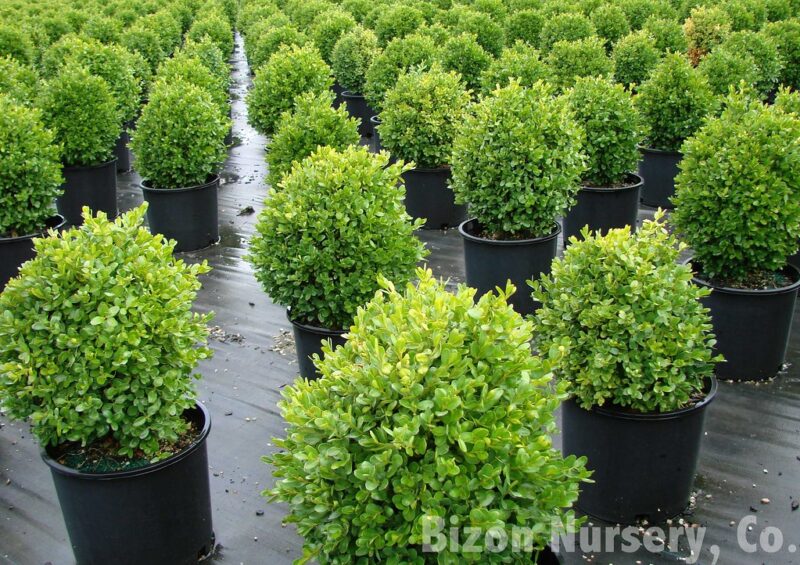
Carpet Box, or Buxus sempervirens, is an evergreen shrub that works wonderfully in shade gardens. Often used for hedging and edging, its dense, compact growth habit provides year-round structure to your landscape. With glossy, dark green leaves, Carpet Box creates an elegant backdrop for other shade-loving plants.
This versatile plant adapts well to various light conditions, including full shade. It thrives in well-drained, fertile soil and requires occasional pruning to maintain its shape and encourage bushier growth. Carpet Box also tolerates drought once established, although regular watering during dry spells will promote healthy growth.
Its ability to serve as a low hedge or a formal border makes Carpet Box an ideal choice for creating a polished look in your garden. Plus, you can get creative by mixing it with flowering perennials for a stunning contrast against the lush green foliage.
Camellia (Camellia spp.)
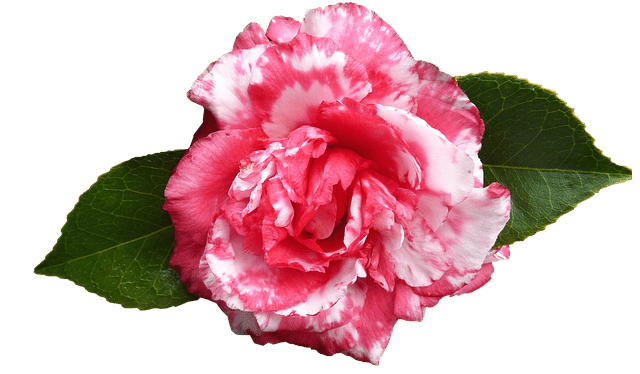
Camellias are classic shade garden plants that offer breathtaking blooms in various colors, from whites to deep reds and pinks. Their evergreen leaves provide year-round interest, making them a favorite among gardeners. Camellias have a reputation for being slightly fussy, but with proper care, they can thrive and reward you with spectacular flowers, especially in late winter and early spring, when few other plants are in bloom.
These plants prefer acidic, well-drained soil and thrive in partial shade, as direct sunlight can scorch their delicate leaves. Regular watering is essential, as they dislike drying out but also do not like sitting in waterlogged soil. A layer of mulch around the base will help retain moisture and keep their roots cool.
When planting Camellias, consider placing them near pathways or areas where their beauty can be enjoyed up close. Regular pruning after flowering can help to shape the plant and promote lush growth.
Coral Bells (Heuchera spp.)
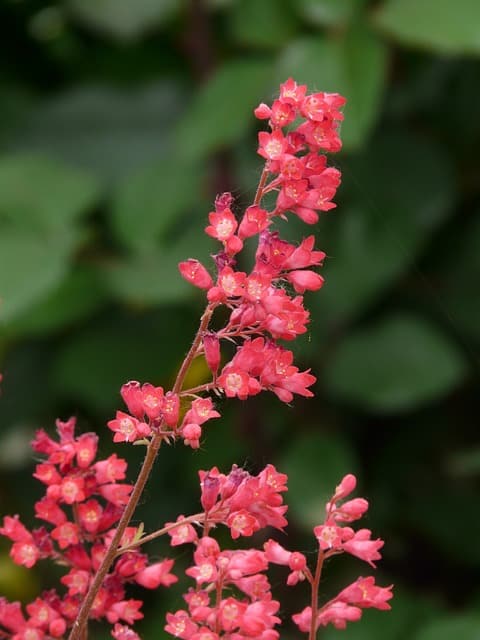
Coral Bells, or Heuchera, are beloved for their colorful foliage that ranges from deep purples to bright greens, and even silver tones. These hardy perennials thrive in partial shade and bring a vibrant palette to your garden. The small, bell-shaped flowers that bloom in late spring and summer add an extra touch of charm.
Coral Bells prefer well-drained, moist soil and can tolerate a wide range of conditions, making them suitable for beginners. They are relatively low-maintenance, only requiring occasional watering and deadheading of spent flowers to encourage more blooms.
This versatile plant can work well in containers or as a ground cover, where its stunning leaves can brighten even the shadiest corners of your garden. Additionally, Coral Bells are known for attracting pollinators, including bees and hummingbirds, adding movement and life to your outdoor space.
Creeping Jenny (Lysimachia nummularia)
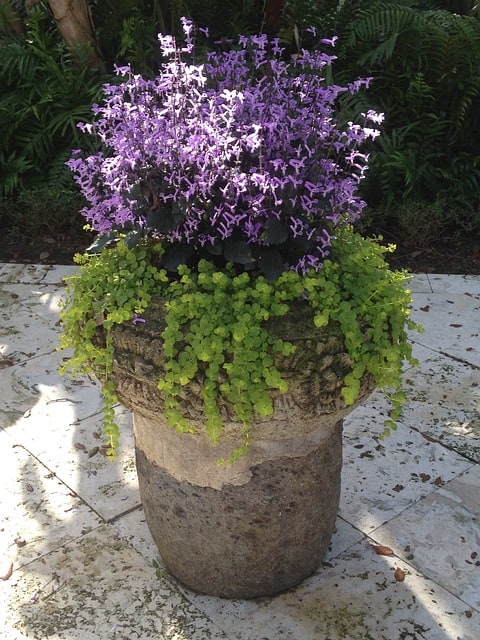
Creeping Jenny is a dynamic ground cover that adds a pop of bright yellow-green to shaded gardens. This hardy perennial thrives in moist, well-drained soil and can tolerate both sun and shade, although it often exhibits its most vibrant colors in partial shade.
When planted in shady areas, Creeping Jenny tends to produce a lush carpet-like coverage that suppresses weeds effectively. Its charming yellow flowers bloom in late spring and can attract pollinators to your garden.
This plant can spread rapidly, making it an excellent choice for filling in bare spots or controlling erosion on slopes. To keep its growth in check, occasional trimming is recommended. Overall, Creeping Jenny is a fantastic addition to any shade garden in Zone 9.
Croton (Codiaeum variegatum)
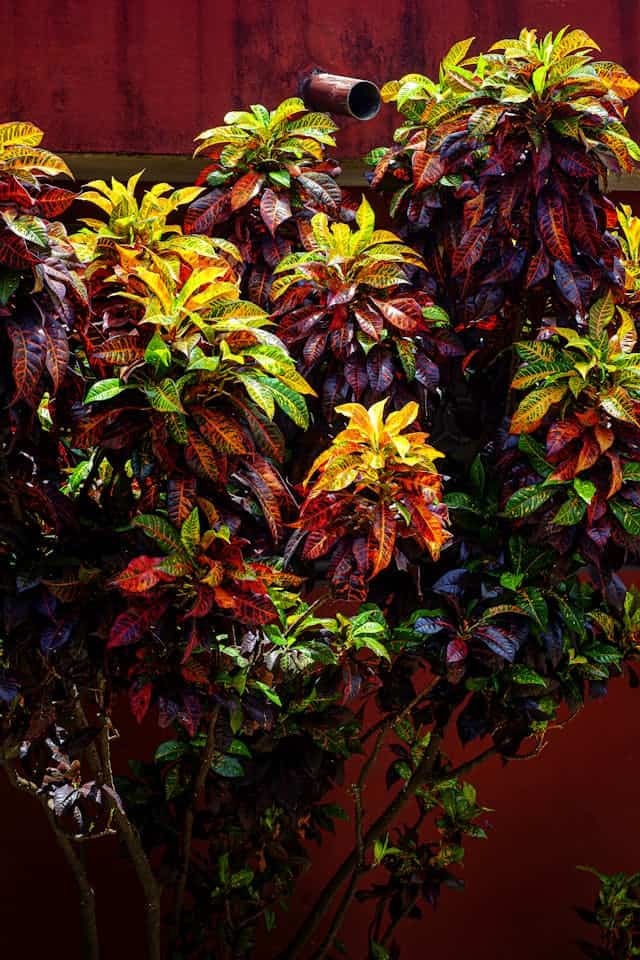
Croton is an eye-catching tropical plant renowned for its striking foliage, which can feature a rainbow of colors, including yellows, reds, oranges, and greens. While it prefers bright light, Croton can also thrive in partial shade, making it a valuable addition to shade gardens in Zone 9.
Growing this tropical beauty requires well-drained, fertile soil. Regular watering is essential, particularly during dry spells, to maintain vibrant colors and healthy growth. Croton can be grown as a houseplant or outdoors in the garden, adding a bold splash of color wherever it’s planted.
When positioning Croton, ensure that it receives some bright, indirect sunlight to maintain its vivid hues. Occasionally pruning can help shape the plant and encourage new growth, leading to a more compact and attractive appearance.
Elephant Ears (Alocasia spp. and Colocasia spp.)
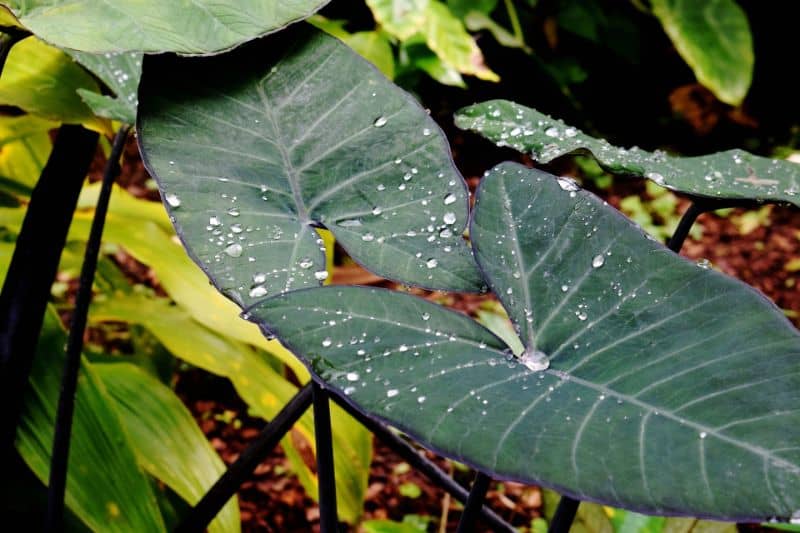
Elephant Ears are famous for their dramatic foliage and can create a tropical vibe in shaded gardens. With large, heart-shaped leaves that can reach impressive sizes, these plants thrive in consistently moist, well-drained soil and prefer partial to full shade.
These plants benefit from regular watering, as they enjoy high humidity. Providing them with moist conditions will help them flourish beautifully and maintain the size of their foliage. Elephant Ears can be planted near water features or in boggy areas of your garden, where they can showcase their stunning leaves to full effect.
When selecting varieties of Elephant Ears, consider the leaf color and size, as they’ll vary significantly among different species. Their lush, tropical aspect makes them an excellent focal point in shaded areas, adding an exotic flair to your garden.
False Goat’s Beard (ARUNCUS dioicus)
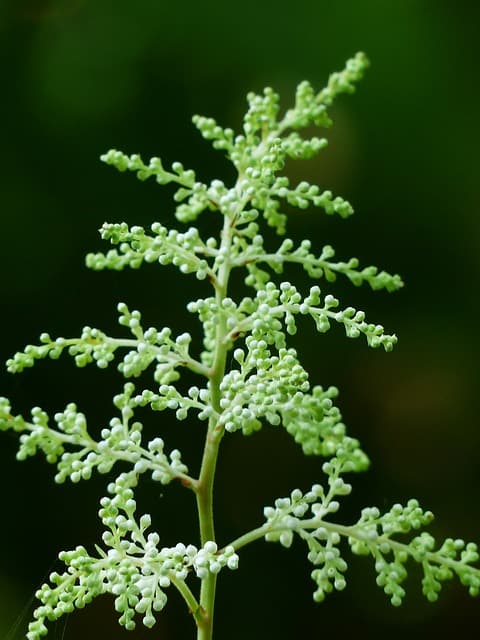
False Goat’s Beard is a perennial that thrives in shady conditions, known for its unique, feathery plumes of creamy white flowers that rise above the foliage in late spring to early summer. This striking texture contrasts beautifully with the softer leaves that remain lush throughout the season.
This plant prefers rich, well-drained soil and can tolerate some moisture, making it suitable for bordered gardens or shady spots. False Goat’s Beard not only attracts pollinators, such as bees and butterflies, but its large leaves also provide excellent coverage and a pleasing backdrop for other garden plants.
Occasional pruning helps maintain its shape and promotes bushier growth. This perennial is perfect for adding height and drama to your shade garden, especially when combined with lower-growing plants that complement its unique appearance.
Flowering Quince (Chaenomeles speciosa)
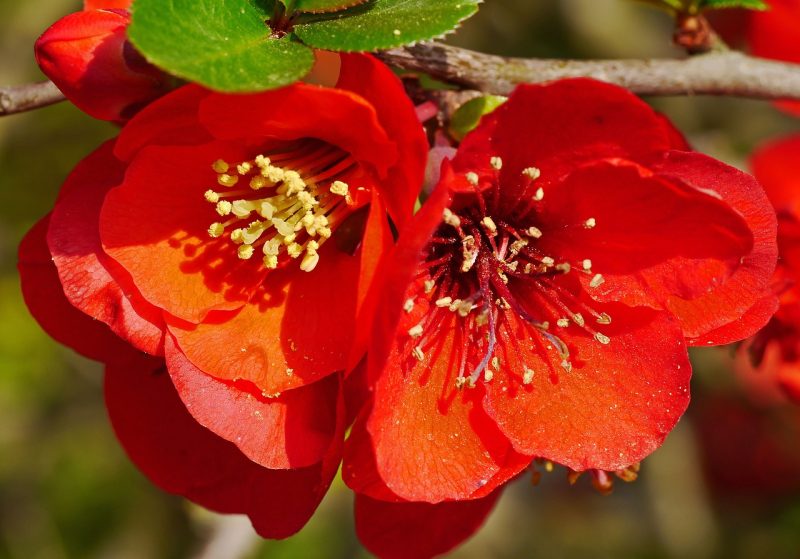
Flowering Quince is a captivating shrub that blooms in early spring, bringing stunning colors such as pink, red, and white to shaded areas before many other plants start to flower. This hardy plant can adapt to various soils and prefers well-draining conditions, making it a fantastic choice for beginners.
This shrub thrives in full sun but can tolerate partial shade, making it versatile for any garden layout. It’s relatively low-maintenance, requiring minimal pruning to maintain shape and promote healthy growth. The intertwining branches can add architectural interest even when not in bloom.
Flowering Quince also produces small, edible fruits after flowering, which can be used in jams and jellies. This shrub is not just a beautiful addition to your shade garden but also functional, combining aesthetic appeal with culinary potential.
Foxtail Fern (Asparagus densiflorus ‘Myers’)
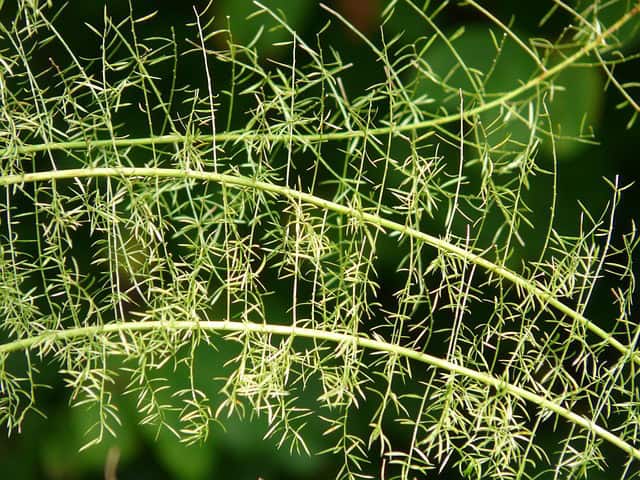
Foxtail Fern is a stunning addition to any shade garden, known for its bushy, upright growth habit that resembles a fox’s tail. This tropical perennial offers a unique texture with its feathery fronds, which can create an inviting green backdrop or a lush accent in shady areas.
This plant can tolerate low light conditions and thrives in well-drained soil. Regular watering is essential to maintain its vibrant color and healthy growth. Foxtail Fern is also relatively low-maintenance, requiring little more than occasional pruning to remove any dead or yellowing fronds.
Aside from its beauty, this fern is also effective in improving air quality, making it an excellent choice for indoor or outdoor greenery. Its unique appearance and adaptability make Foxtail Fern a delightful plant for both novice and seasoned gardeners alike.
Hostas
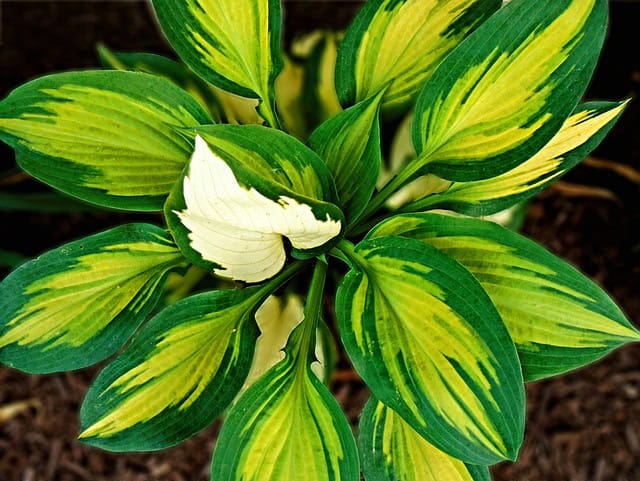
Hostas are a classic choice for shade gardens, known for their lush foliage and varied sizes. With leaves that come in a variety of colors, including shades of blue, green, and yellow, and patterns that can be solid, variegated, or mottled, Hostas can bring an exciting array of visuals to a shaded area.
These perennial plants thrive in rich, well-draining soil and prefer partial to full shade, making them ideal for those tricky spots beneath trees or in the shade of buildings. Hostas require regular watering to keep their large leaves healthy and vibrant, especially in hot weather.
Moreover, Hostas produce lovely spikes of lavender or white flowers in mid to late summer that attract pollinators such as bees and hummingbirds. Be mindful to provide some protection from slugs, which can be a common pest; using organic deterrents can help keep them at bay. With varying heights and forms, Hostas can be creatively combined to create a stunning display.
Hydrangeas
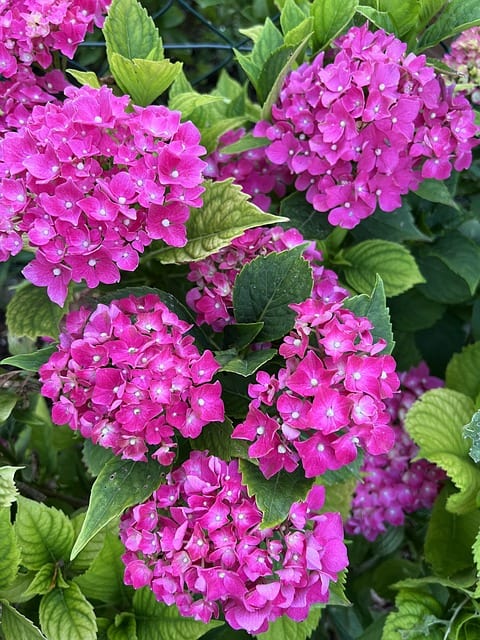
Hydrangeas are versatile shrubs that thrive in shade and are celebrated for their large, showy blooms. Available in shades of blue, pink, white, and purple, these hydrangeas can create an eye-catching focal point in your garden. The color of the flowers often depends on the soil pH; acidic soils tend to produce blue flowers, while alkaline soils yield pink ones.
In Zone 9, the most popular varieties for shaded gardens include Limelight, Annabelle, and Oakleaf hydrangeas, which can tolerate partial shade quite well. They prefer moist, well-draining soil enriched with organic matter. Regular watering is important, especially during hot spells, to prevent wilting and to promote healthy blooms.
While hydrangeas require minimal pruning, removing spent flowers will encourage new growth. The stunning blooms and dramatic foliage will not only enhance your garden’s visual appeal but will also attract pollinators and beneficial insects to your outdoor space.
Japanese Toad Lily (Tricyrtis spp.)
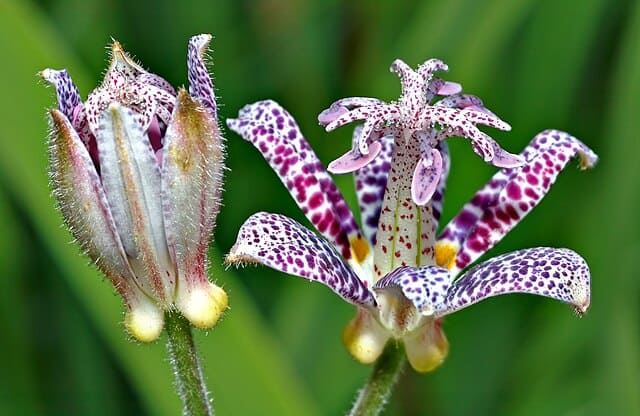
The Japanese Toad Lily is a unique and exotic plant that adds intrigue to the shaded areas of your garden. With its delicate, orchid-like flowers that appear in late summer and into fall, it brings a burst of color when many other plants may be finishing their display. Its mottled leaves provide additional visual interest, creating a lush backdrop for the striking flowers.
Toad lilies thrive in well-draining, rich soil and prefer partial to full shade. They are perennial plants that are relatively low-maintenance once established. Regular watering will help keep the soil consistently moist, but be careful not to overwater, as they do not tolerate soggy conditions well.
To enhance the visual appeal, consider pairing Toad Lilies with other shade-loving plants that have contrasting foliage types. Their whimsical blooms and unique structure make them a wonderful conversation starter in your garden.
Lenten Rose (Helleborus spp.)
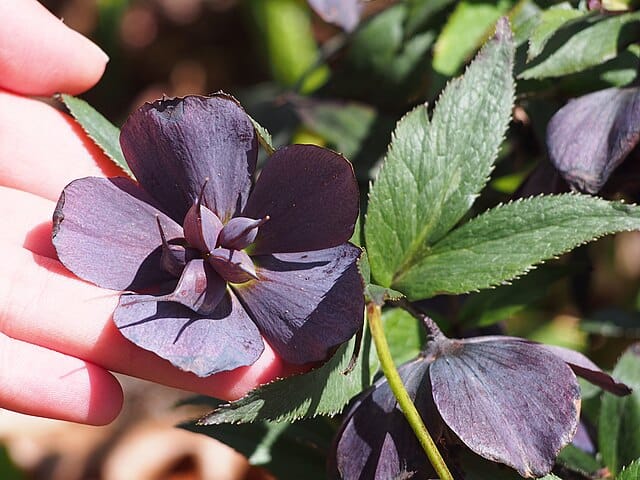
Lenten Rose, or Helleborus, is a stunning perennial that blooms in late winter to early spring, providing color when most other plants are still dormant. Its nodding flowers come in shades of white, pink, purple, and even green, and they can last for several months. The leathery, evergreen leaves provide year-round interest, making Lenten Rose a valuable addition to the shade garden.
This hardy plant thrives in well-draining soil rich in organic matter. Lenten Roses prefer partial to full shade, making them ideal for woodland gardens or shady borders. They are drought-tolerant once established, but regular watering during dry spells will help maintain vigorous growth.
One of the great benefits of Lenten Rose is its resilience; it can tolerate a range of soil conditions and is even deer-resistant. Make sure to mulch around the base to retain moisture and suppress weeds, promoting a healthy environment for this beautiful plant.
Northern Sea Oats (Chasmanthium latifolium)
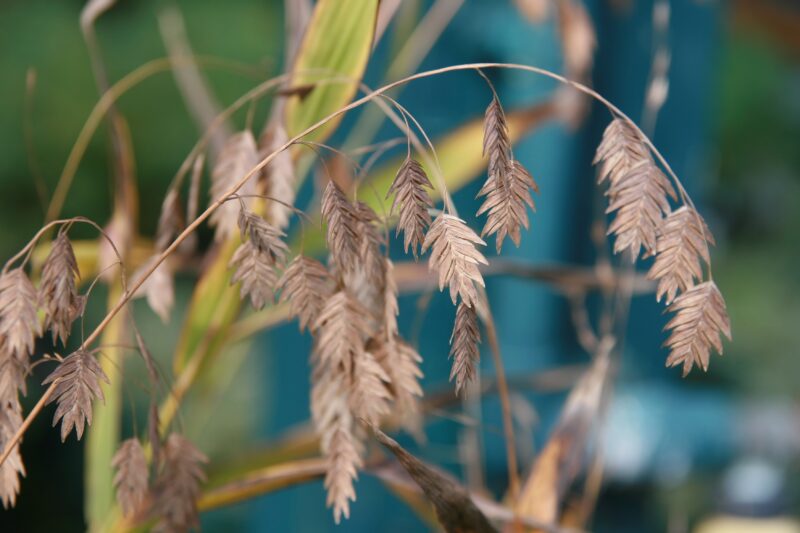
Northern Sea Oats is a unique ornamental grass loved for its graceful, arching growth habit and interesting seed heads that resemble oat grains. This perennial thrives in partial to full shade and adds textural contrast to traditional shade plantings.
This grass prefers moist, well-drained soil and can tolerate varying moisture levels, making it a resilient addition to your garden. It self-seeds readily, allowing it to spread naturally, but it can also be easily controlled through careful management.
The plumes turn a lovely golden color in late summer and fall, providing beautiful visuals even in the winter landscape. Northern Sea Oats also attracts butterflies and other pollinators, supporting a vibrant ecosystem in your garden.
Othello Leopard Plant (Farfugium japonicum ‘Othello’)
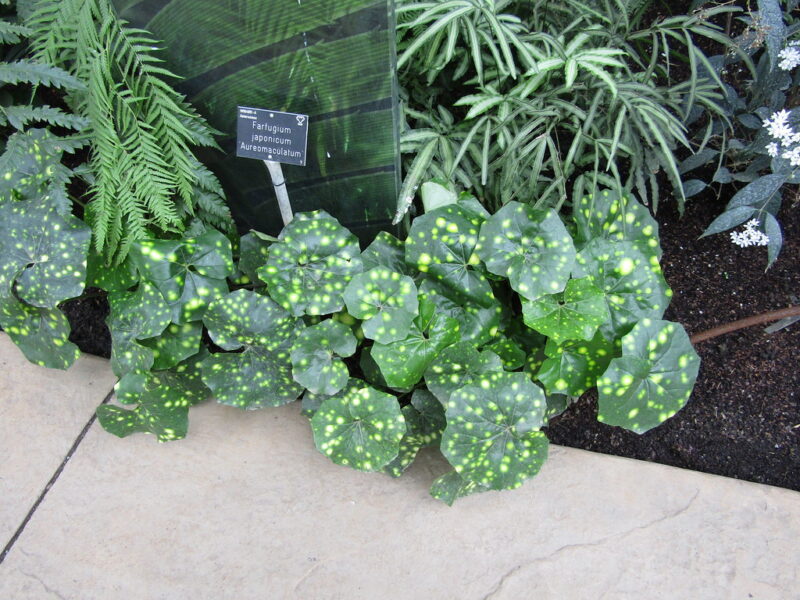
Othello Leopard Plant is a striking foliage plant that stands out in any shade garden. With its large, glossy leaves adorned with prominent yellow spots, it adds an exotic and playful touch to shaded areas. The bright yellow flowers in late summer further enhance its appeal, complementing the dramatic foliage.
This perennial thrives in moist, well-draining soil and prefers partial to full shade. It grows best in areas that remain consistently damp but not soggy. Othello Leopard Plant is relatively low-maintenance, requiring minimal pruning to maintain its shape and health.
Given its rich foliage and unique appearance, Othello Leopard Plant is perfect for creating focal points in your garden beds. Pair it with other shade-loving plants for a dynamic mix that showcases the best of texture and color.
Periwinkle (Vinca minor)

Periwinkle, or Vinca minor, is a superb ground cover for shade gardens, featuring glossy leaves that create a lush carpet of greenery. This perennial boasts charming blue or purple flowers that bloom in spring, adding a delightful splash of color to shaded areas.
Periwinkle thrives in various soil types, preferring well-drained conditions, and it tolerates partial to full shade. Once established, it spreads readily, effectively suppressing weeds and providing a tidy appearance.
While Periwinkle is highly adaptable, it’s essential to monitor its growth, as it can become invasive if left unchecked. Regular trimming will help maintain its desired spread and promote thick, healthy growth. Its ability to attract pollinators makes it a valuable addition to any shade garden.
Pig Squeak (Bergenia)
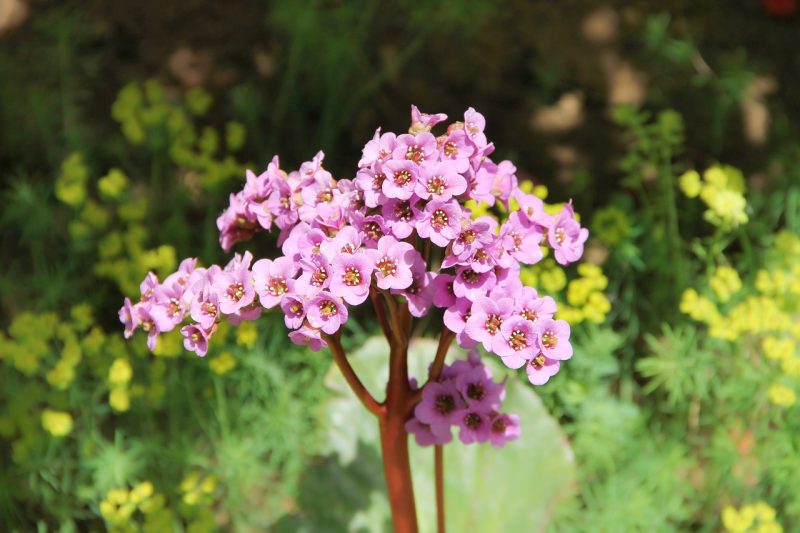
Pig Squeak, or Bergenia, earns its name from the distinctive, rounded leaves that produce a squeaky sound when rubbed together. This bold perennial features large leaves that can endure tough conditions while adding structure to shaded areas. In spring, the plant produces clusters of pink or white flowers that rise above the foliage, creating an attractive display.
Pig Squeak thrives in well-drained soil and can tolerate both partial sun and full shade. It requires moderate watering, especially during dry spells, but is known for its drought resistance once established.
This plant is excellent for ground cover and can fill large spaces quickly. With its evergreen leaves, Pig Squeak also provides year-round interest, making it a practical and visually appealing option for shade gardens.
Spiderwort (Tradescantia spp.)
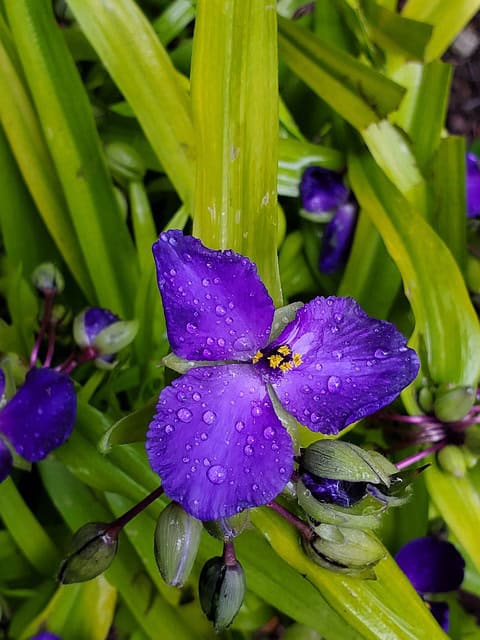
Spiderwort is a lively perennial featuring striking blue, purple, or white flowers that bloom profusely in late spring to early summer. With its grass-like foliage, Spiderwort creates an attractive backdrop in shaded gardens, providing a burst of color when many other plants are settling into dormancy.
This hardy plant prefers relatively moist, well-drained soil and thrives in partial shade, tolerating full shade if needed. Regular watering is essential, especially during hot periods, to keep the foliage lush and vigorous.
Spiderwort can spread quite well, making it a great choice for filling in bare spots or borders in your garden. The foliage can become somewhat messy after flowering, so be prepared to tidy up when the blooms fade. Its ability to attract pollinators enhances the overall biodiversity of your shade garden.
Tuberous Begonia (Begonia tuberosa)
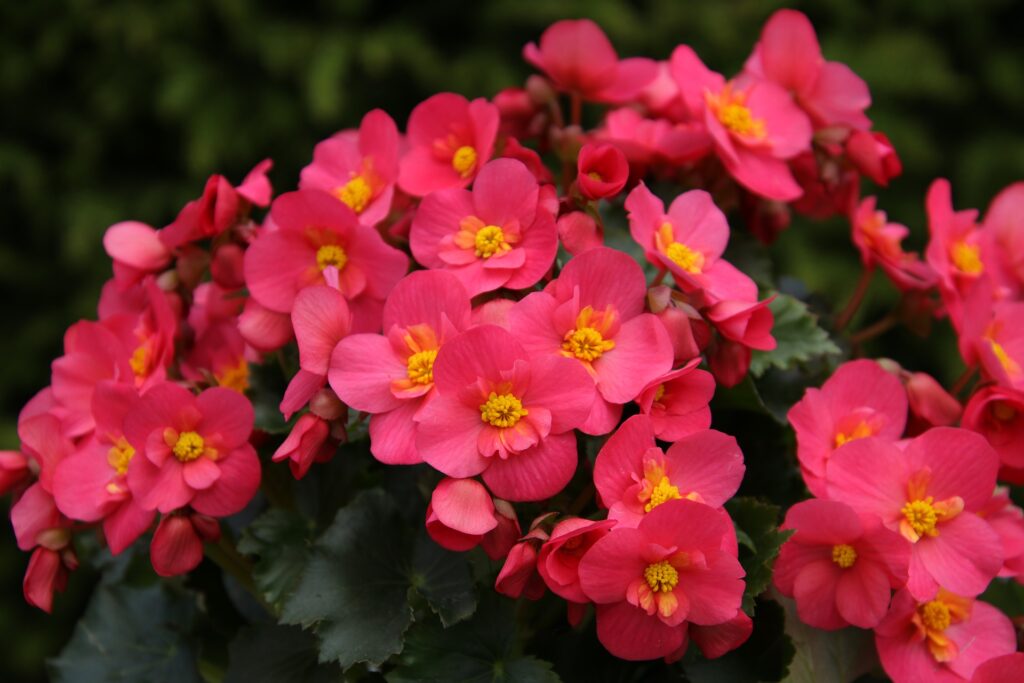
Tuberous Begonias are known for their spectacular blooms and versatility in shaded gardens. These plants produce large, colorful flowers in a range of shades, including reds, pinks, oranges, and whites, making them a favorite for adding color to darker areas.
Tuberous Begonias thrive in well-drained soil and prefer partial shade or filtered sunlight, making them perfect for under trees or alongside paths. Regular watering is crucial, especially during dry spells, to keep their foliage vibrant and healthy.
These begonias can be grown in containers or directly in the ground, offering flexibility in garden design. Their lush blooms and foliage add a tropical feel to your shaded space, making Tuberous Begonias a delightful choice for visual impact.
Western Wild Ginger (Asarum caudatum)
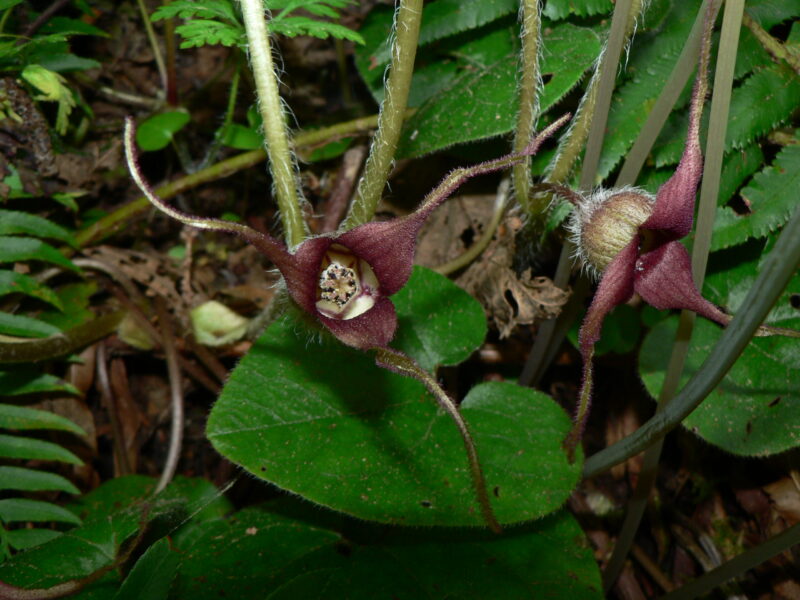
Western Wild Ginger is a unique shade-loving perennial that features attractive, heart-shaped leaves and ground-hugging growth. It produces small, inconspicuous brown flowers hidden beneath the foliage, often going unnoticed but offering interest to knowledgeable gardeners.
This native plant thrives in rich, moist, well-drained soil and prefers partial to full shade. Western Wild Ginger is an excellent choice for creating a natural, woodland effect in your garden and works well as a ground cover, suppressing weeds while enhancing visual richness.
Its resilience makes it an easy-care option for beginners. You can enhance its beauty by combining it with other native plants to create a biodiverse ecosystem that attracts beneficial wildlife to your garden.
Wild Stonecrop (Sedum ternatum)
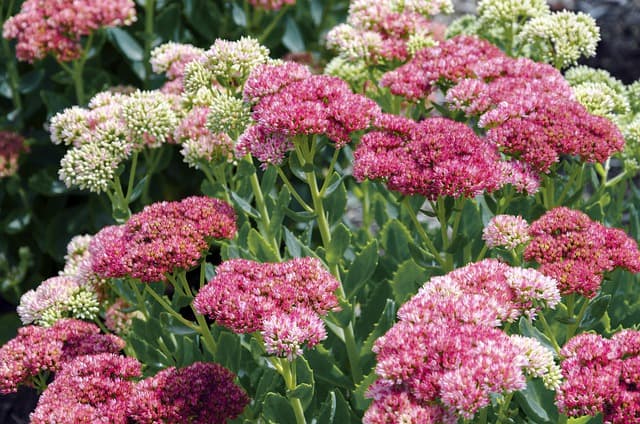
Wild Stonecrop, or Sedum ternatum, is a delightful creeping succulent that thrives in partial to full shade. This hardy perennial features fleshy, green leaves that turn reddish in fall, along with small yellow flowers that bloom in clusters during spring and early summer.
This plant prefers well-draining soil and is drought-resistant, making it an ideal candidate for low-maintenance gardens. Wild Stonecrop can be a charming ground cover that works well in containers or between stepping stones in shaded areas.
Its unique texture and form provide interest in a shade garden while also requiring minimal upkeep. Wild Stonecrop is perfect for beginners, offering both beauty and practicality.
Wood Violet (Viola spp.)
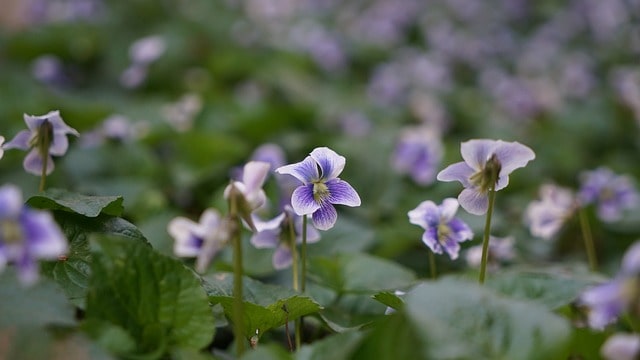
Wood Violet, or Viola, is a charming perennial that blooms in early spring, displaying lovely purple, blue, or white flowers. Its heart-shaped leaves provide a lush green backdrop, making it a perfect choice for shaded gardens. The flowers attract bees and butterflies, adding life to your outdoor space.
Wood Violets prefer moist, well-drained soil and can thrive in partial to full shade, making them an adaptable choice for various garden layouts. They spread quickly, forming delightful mats of flowers that return year after year with minimal care.
Regular watering will help them perform best during hot summers, but they are generally low-maintenance once established. The delightful blooms and fragrant foliage make Wood Violets a classic addition that adds joy to any shade garden.





